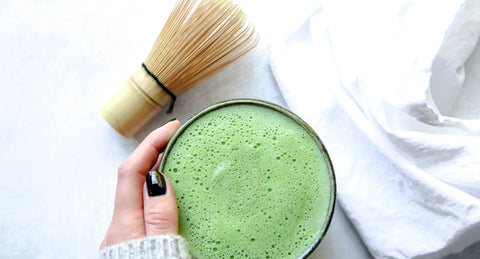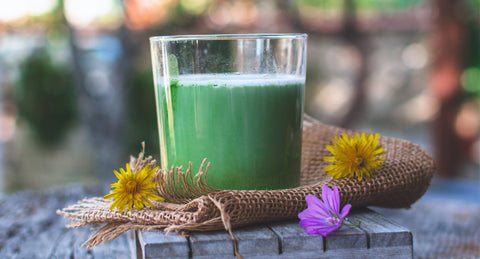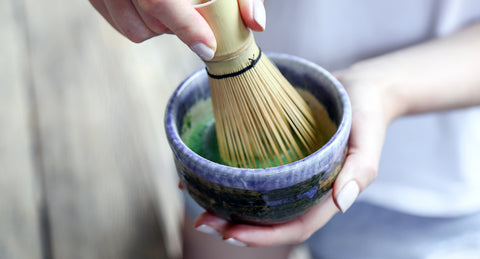The matcha whisk, or "chasen" in Japanese, is a beautifully crafted tool essential to the traditional Japanese tea ceremony. This humble yet sophisticated instrument plays a crucial role in transforming matcha powder into the frothy, bright green beverage cherished for centuries. The history of the matcha whisk is a fascinating journey through time, culture, and craftsmanship.
Origins of Matcha and Tea Ceremony
To understand the matcha whisk's history, one must first appreciate the origins of matcha itself. The practice of drinking powdered tea dates back to China’s Tang Dynasty (618–907 AD). However, it was during the Song Dynasty (960–1279 AD) that the practice of whipping powdered tea in hot water became popular, setting the stage for the Japanese tea ceremony.
Eisai, a Japanese Buddhist monk, is credited with bringing tea seeds and the practice of tea preparation from China to Japan in 1191. He also introduced Zen Buddhism, which heavily influenced the Japanese tea ceremony, or "chanoyu." This ceremony became a meditative practice deeply rooted in aesthetics and simplicity, evolving into a unique cultural ritual in Japan.
Development of the Matcha Whisk
The chasen as we know it today began to take shape during the Muromachi period (1336–1573). The design and function of the chasen were refined to meet the specific needs of preparing matcha. The whisk had to be delicate yet sturdy, capable of creating a smooth, frothy texture without clumping.
The early chasens were likely simpler in design, but as the tea ceremony grew in sophistication, so did the whisk. Artisans began to experiment with different materials and designs, eventually settling on bamboo as the ideal material due to its flexibility and strength. The process of making a chasen became an art form, requiring great skill and precision.
Craftsmanship of the Chasen
The crafting of a matcha whisk is a meticulous process passed down through generations of artisans, primarily in the Takayama region of Japan, which is renowned for its chasen production. The process involves several stages:
-
Selecting Bamboo: Only specific types of bamboo are suitable for making a chasen. The bamboo must be aged and dried properly to achieve the right balance of flexibility and durability.
-
Cutting and Splitting: The bamboo is cut to the appropriate length and then split into finer sections. Each whisk requires multiple splits to create the necessary tines (the individual prongs).
-
Shaping and Carving: The tines are then carefully shaped and carved by hand. This step is crucial as it determines the whisk's functionality and aesthetic appeal.
- Finishing: The final stage involves smoothing and rounding the tines to prevent damage to the tea bowl and ensure a smooth whisking action.
The Role of the Chasen in the Tea Ceremony
The matcha whisk is not just a functional tool; it is a symbol of the philosophy behind the tea ceremony. The ceremony, which emphasizes harmony, respect, purity, and tranquility, is a form of art where every movement and object holds significance. The chasen, with its elegant form and handcrafted beauty, embodies the dedication to simplicity and mindfulness.
During the tea ceremony, the host uses the chasen to mix the matcha powder with hot water, creating a harmonious blend of flavors and textures. The motion of whisking, often described as "whisking with the heart," is a meditative practice that requires focus and grace.
Modern-Day Matcha Whisks
In contemporary times, the appreciation for matcha has spread globally, and with it, the matcha whisk. While traditional chasen remain highly valued, modern variations and even machine-made whisks have emerged. However, the traditional hand-crafted chasen continues to be revered for its superior quality and connection to the cultural heritage of the Japanese tea ceremony.
The rise of matcha in health and wellness circles has also sparked renewed interest in the matcha whisk. As more people embrace the benefits of matcha, the chasen has become an essential tool for anyone looking to prepare authentic matcha at home.
Conclusion
The history of the matcha whisk is a testament to the enduring appeal of matcha and the Japanese tea ceremony. From its origins in ancient China to its refinement in Japan, the chasen represents a blend of artistry, tradition, and functionality. As we continue to appreciate matcha in modern times, the matcha whisk remains a symbol of cultural heritage and the timeless pursuit of beauty and mindfulness in everyday rituals. Whether used in a traditional tea ceremony or a contemporary kitchen, the matcha whisk connects us to a rich history and a deeper appreciation for the simple yet profound act of preparing tea.



